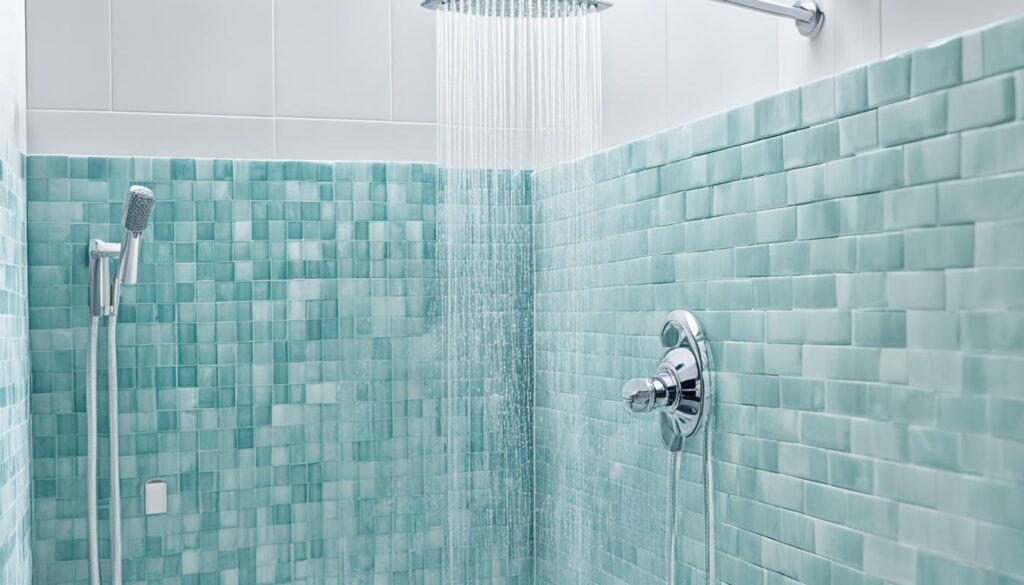
Innovative Techniques for how to get Mold out of shower
Welcome to our comprehensive guide on innovative techniques for effectively removing mold from your shower. Having a clean and safe bathroom environment is essential for your health and well-being, and knowing how to get mold out of your shower effectively is the first step towards achieving that. Mold not only looks unsightly but can also pose serious health risks, especially for individuals with allergies or respiratory conditions.
Before we dive into the expert methods and solutions, it’s important to understand why mold grows in showers in the first place. The warm and moist conditions created by daily showers provide the ideal environment for mold to thrive. From grout lines to shower curtains, no surface is immune to mold growth.
In this article, we will provide you with valuable tips and expert techniques to effectively combat mold in your shower. By implementing these strategies and taking preventive measures, you can maintain a clean and safe bathroom environment for you and your family.
Key Takeaways:
- Regularly inspect your shower for any signs of mold growth.
- Use natural cleaning solutions, such as vinegar or hydrogen peroxide, to remove mold from surfaces.
- Ensure proper ventilation in your bathroom to reduce moisture and inhibit mold growth.
- Replace old or damaged shower curtains to prevent mold buildup.
- Consider using mold-resistant paint or coatings on shower walls and ceilings.
Expert Methods for Removing Mold from your Shower
In this section, we will delve into expert methods for removing mold from your shower. When it comes to mold, prevention is key, but if you already have a mold problem, it’s crucial to address it promptly to prevent further damage and ensure a healthy living environment.
Step-by-Step Instructions for Removing Mold
- Identify the Mold: Begin by identifying the type of mold you’re dealing with. This will help determine the best approach for removal.
- Protect Yourself: Mold can release harmful spores when disturbed, so it’s essential to wear protective gear such as gloves, goggles, and a face mask.
- Contain the Area: Before starting the removal process, isolate the affected area by sealing off any vents or openings to prevent the mold spores from spreading to other parts of your home.
- Remove Mold Growth: Use a mold-specific cleaning solution or an effective alternative like a mixture of vinegar and water to clean the mold-infested areas thoroughly. Scrub the surface gently using a stiff brush or sponge.
- Dry the Area: After cleaning, ensure the area is completely dry to discourage mold regrowth. Consider using a dehumidifier or increasing ventilation to expedite the drying process.
- Dispose of Contaminated Materials: Any porous materials that are heavily contaminated with mold, such as shower curtains or grout, should be carefully disposed of and replaced with new ones.
- Preventive Measures: To prevent future mold growth, regularly clean and disinfect your shower, ensure proper ventilation, and keep the area dry to discourage mold spores from thriving.
Effective Solutions for Mold Prevention
In addition to removing existing mold, implementing preventive measures is crucial to maintaining a mold-free shower. Here are some effective solutions:
- Ventilation: Install an exhaust fan in your bathroom to improve air circulation and reduce humidity levels, as mold thrives in damp environments.
- Regular Cleaning: Clean your shower regularly using mold-inhibiting products or natural alternatives like baking soda and hydrogen peroxide.
- Seal Grout Lines: Properly seal the grout lines in your shower to prevent moisture buildup and inhibit mold growth.
- Monitor Moisture Levels: Use a hygrometer to monitor the humidity levels in your bathroom. Maintain humidity below 50% to discourage mold growth.
Remember, preventing mold is always easier than remediation. By regularly maintaining your shower and addressing any moisture issues promptly, you can create a mold-resistant environment for a clean and healthy bathroom.
Now that you have learned expert methods for removing mold from your shower and effective solutions for prevention, you are better equipped to tackle mold-related issues and maintain a mold-free bathroom environment.

Conclusion
In conclusion, the innovative techniques and expert methods discussed in this article provide effective solutions for removing mold from your shower and maintaining a clean and safe bathroom environment. By following these steps, you can successfully eliminate mold growth and prevent further issues.
Regular inspection is crucial to identify any signs of mold and address them promptly. Timely intervention can help prevent the spread of mold and minimize damage to your shower and bathroom. Remember to check for any hidden areas where moisture may accumulate, such as behind tiles or in grout lines.
If you encounter extensive mold growth or have difficulty removing mold on your own, it is recommended to seek professional assistance. Fix Mold Miami, based in Miami, is a reputable service provider that specializes in mold assessments and remediation. They can be reached at 305-465-6653 for personalized advice and expert solutions in dealing with mold in your shower.




